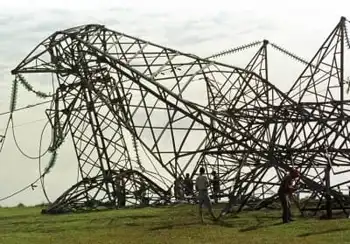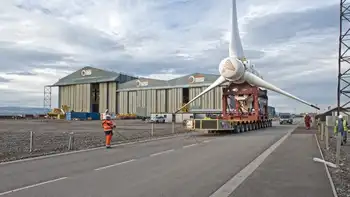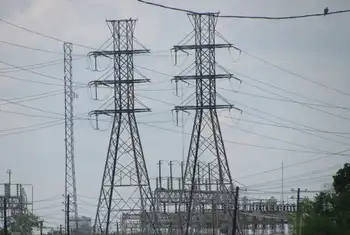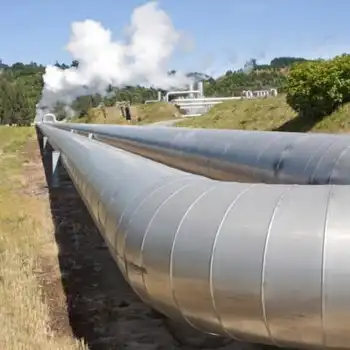“Carbon army” hopes to grab a slice of the cash
They see it not just as a way to boost flagging economies, but also as an opportunity to promote investment in green energy projects.
In times of downturn, spending on infrastructure can prime demand, provide work and avert depression, a lesson learned from U.S. President Franklin Roosevelt's New Deal in the 1930s.
Green projects that would be candidates include wind and solar farms, efficiency programs to curb demand for carbon-emitting fossil fuels, and "scrubbers" to absorb carbon dioxide from smokestacks of coal-burning plants.
"You're going to have a classic green stimulus, and when you talk about infrastructure it's about renewables, it's the power grid, the water sector, buildings, energy efficiency and public transport," said Mark Fulton, global head of climate change investment research at Deutsche Bank.
A $3.3 trillion bank bailout pledged by governments in the past month contrasts with the lower costs of measures that could dent the world's energy demands and cut carbon emissions at a time of dwindling resources and rising populations.
The narrow time-frame to create jobs and spur the economy, however, does not match the long lag time to develop large-scale renewable energy projects, where colossal investment is required. These would include technologies such as off-shore wind, tidal power and carbon scrubbers, which are still being tested or require planning consent.
Energy efficiency projects, for example to insulate homes, may fit the bill.
A program to halve global energy demand growth by 2020 would cost $170 billion per year and knock $900 billion off annual fuel bills by then, say researchers McKinsey.
"There could be thousands of jobs in the UK generated over the next 12 to 24 months by simply reducing the carbon footprint of buildings," said Achim Steiner, executive director of the United Nations Environment Program (UNEP).
"It doesn't take billions of dollars."
Steiner was in London for the launch of the UNEP "Green New Deal," meant to stimulate the use of economic tools to promote investment in the environment, such as carbon pricing under Europe's emissions trading scheme launched in 2005.
On Monday, British Prime Minister Gordon Brown advocated an increase in borrowing to shore up the economy, backing efficiency spending.
U.S. Federal Reserve Chairman Ben Bernanke supported a second fiscal stimulus plan to add to the bank bailout.
About 60 percent of all greenhouse gas emissions stem from energy production, according to the International Energy Agency which advises 28 countries on energy policy.
Supporters of low-carbon energy projects say they are the ideal way to avert catastrophic climate change and encourage alternatives to imports of oil — costing the United States more than $200 billion a year — from unstable suppliers.
A brief conflict in August between Russia and its energy-transit neighbor Georgia highlighted Europe's dependence on Russian gas.
"In the European context it makes a lot of sense to have a pan-European super grid which connects different regions with different technologies, wind, hydro, solar," said Henner Gladen, co-founder of German firm Solar Millennium.
The timing is good too, they say. The developed world is replacing aging energy infrastructure, installed more than 50 years ago, while emerging economies are making energy choices now that will last another half-century.
However, far from backing a green wave of investment, some politicians want to reconsider support for climate targets that will add to fuel bills, by effectively taxing carbon emissions and thereby harming industry and alienating voters.
Italy said last week it had the support of 10 European Union member states to delay approval of ambitious EU climate measures.
When tens of billions of dollars are available, there is no shortage of needy projects. In Britain that may mean schools and hospitals. In the United States, it could be roads, bridges and healthcare — under U.S. governors' pleas for the federal government to back an economic recovery package.
Some economists dispute whether spending during bad times is a good idea, arguing that a lag effect means it contributes to inflation and adds to the tax burden just as a country is emerging from recession under its own steam.
Finally, an efficiency drive also implies a society less obsessed with consumption, perhaps the last remedy to revive a flagging economy.
Related News

New Power Grid “Report Card” Reveal Dangerous Vulnerabilities
WASHINGTON - The U.S. power grid just received its “grade card” from the American Society of Civil Engineers (ASCE) and it barely passed.
The overall rating of our antiquated electrical system was a D+. Major power outages in the United States have grown from 76 in 2007 to 307 in 2011, according to the latest available statistics. The major outage figures do not take into account all of the smaller outages which routinely occur due to seasonal storms.
The American Society of Civil Engineers power grid grade card rating means the energy infrastructure is in “poor to fair condition and mostly below…





